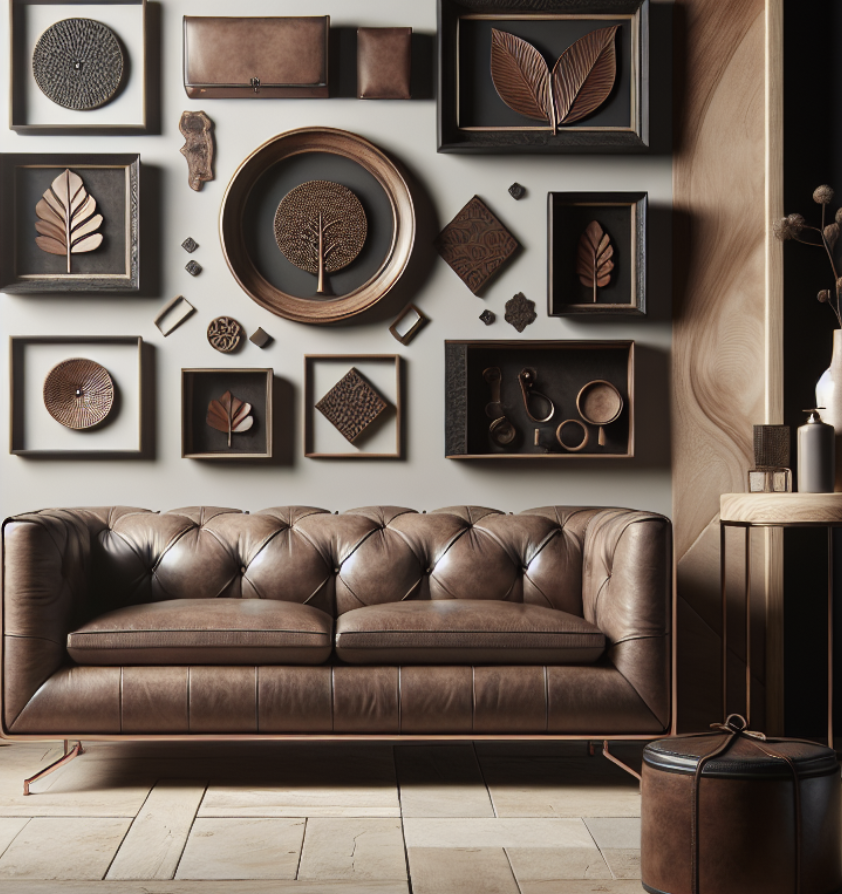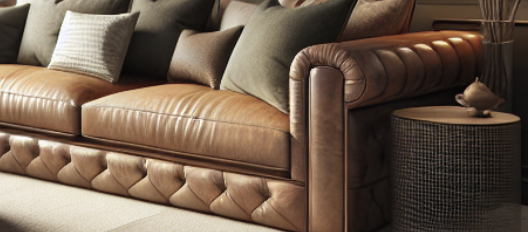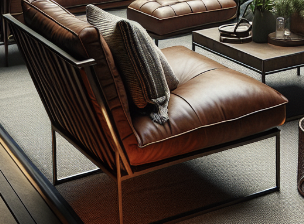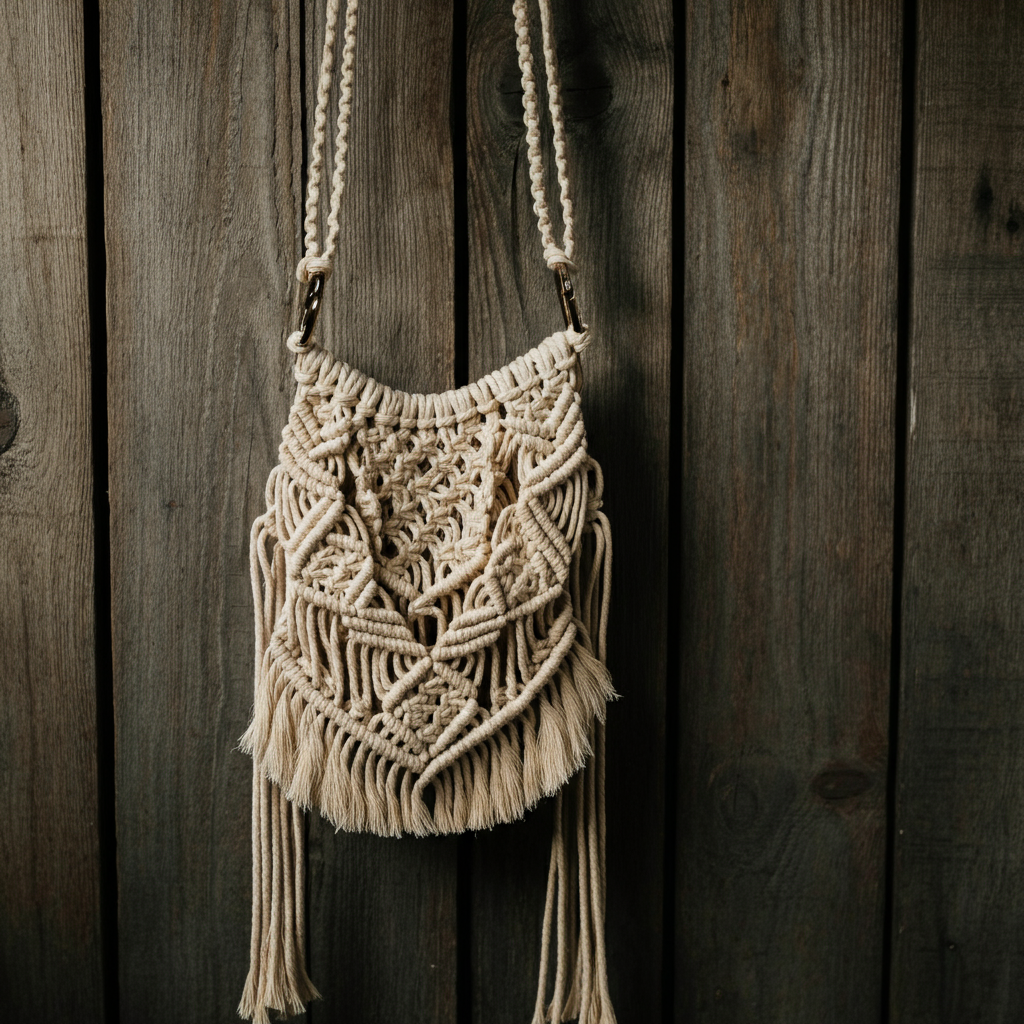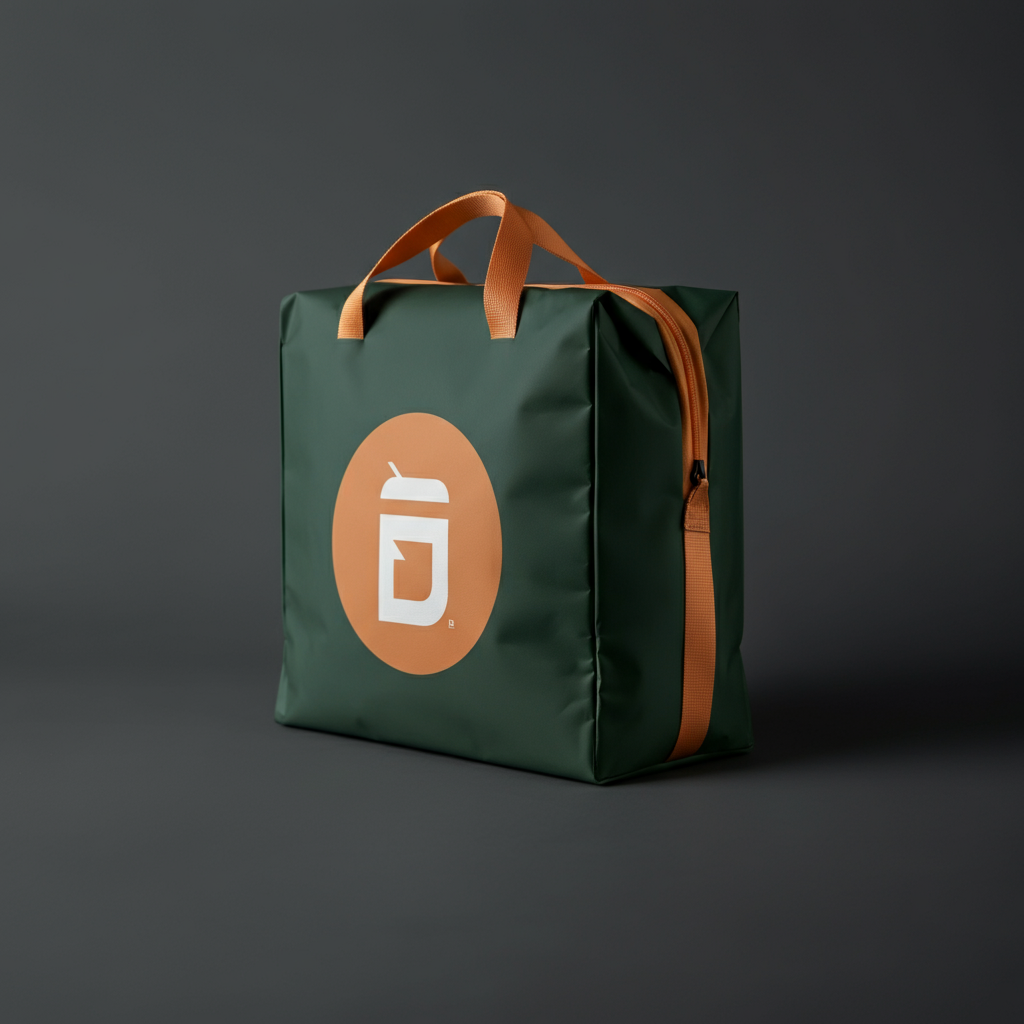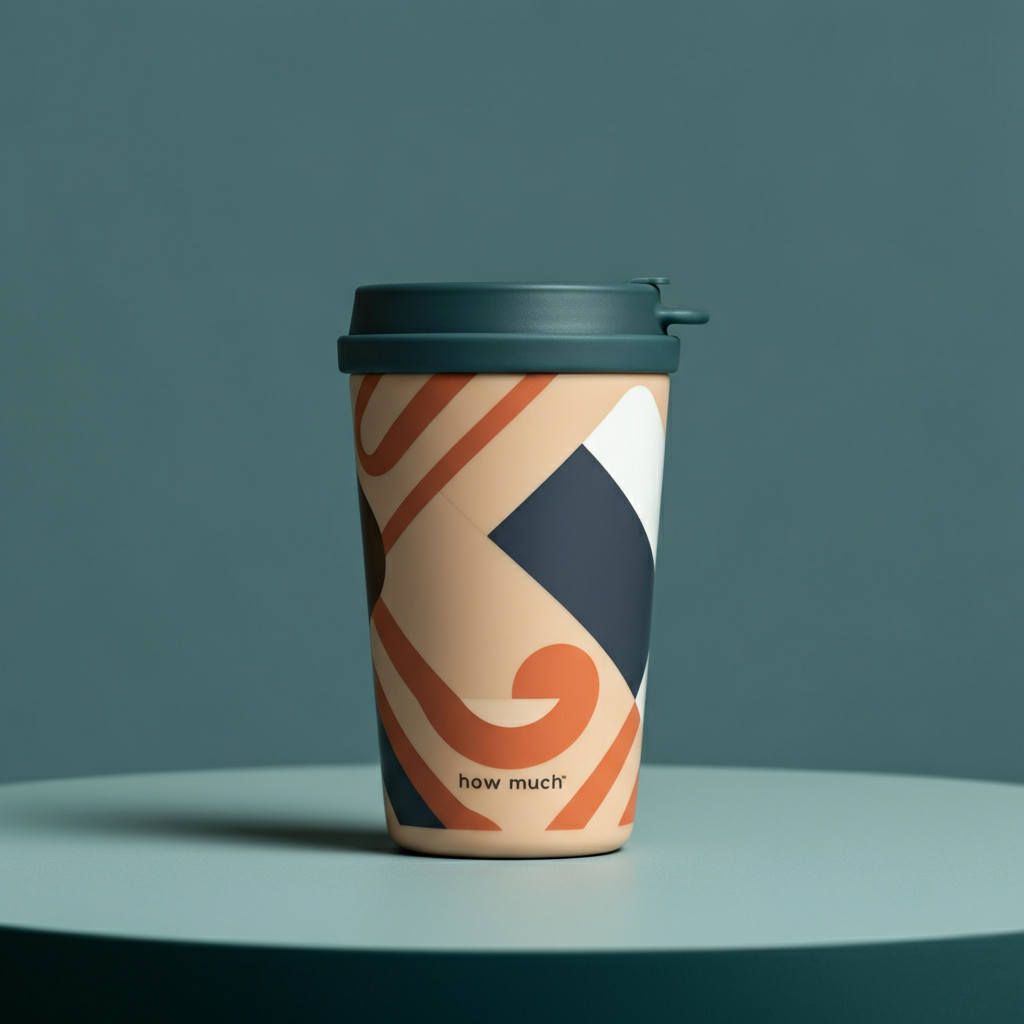Leather in Interior Design
Introduction
Leather has always been synonymous with luxury and sophistication. Yet, in recent years, its appeal has surged significantly in the realm of interior design. From its versatility to its sustainable options, leather is emerging as a go-to material for creating both opulent and cozy living spaces.
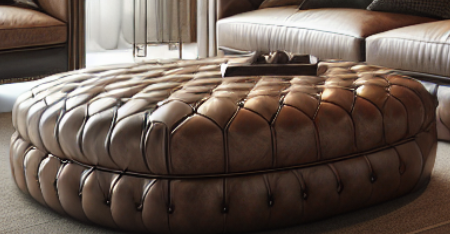
The Versatility of Leather in Interior Design
One of the standout features of leather is its remarkable versatility. It’s not just confined to sofas and armchairs anymore—though it certainly excels there. Leather now finds its place in an array of interior elements, from wall treatments and flooring to decorative accessories like cushions and lampshades. This adaptability makes it an invaluable resource for both traditional and modern design styles.
For traditional settings, leather adds a touch of vintage charm, reminiscent of old-world libraries and classic gentlemen's clubs. Think rich, dark hues, and deeply tufted textures that exude warmth and elegance. Conversely, in modern interiors, leather introduces sleekness and minimalism. Using lighter shades and streamlined designs, contemporary leather pieces can create a clean, sophisticated look that’s both inviting and stylish.
Leather can be seamlessly incorporated into various design elements, too. Imagine a living room with a striking leather accent wall paired with a mix of metal and wood furnishings—pure visual delight. Or consider a minimalist bedroom where a leather headboard serves as the room’s focal point, tying together various textures and colors harmoniously. The possibilities are endless, proving leather’s unparalleled versatility in interior design.
Sustainable Leather: A Growing Preference
In an era where sustainability is more crucial than ever, the shift towards eco-friendly materials in interior design is undeniable. Leather, often criticized for its environmental impact, is undergoing a significant transformation. Sustainable leather options are gaining traction, offering eco-conscious designers and homeowners the luxury of leather without the associated guilt.
Brands like Sun Enterprises are leading the charge by providing waived leather and leather cords that adhere to stringent environmental standards. Waived leather, for instance, is produced using eco-friendly tanning processes and often incorporates recycled materials. It’s a win-win situation—achieving the timeless elegance of leather while minimizing environmental harm.
The benefits of sustainable leather extend beyond its green credentials. It retains all the desirable qualities of traditional leather, including durability, aesthetic appeal, and comfort. By choosing sustainable leather products from reputable suppliers like Sun Enterprises, you're not just making a style statement; you're also taking a stand for the planet. This growing preference for sustainable leather signifies a positive shift in how we approach interior design.
Leather Maintenance and Longevity
One of the main attractions of leather in interior design is its longevity. When properly cared for, leather can last decades, making it a wise investment for any home. However, understanding how to maintain its quality and appearance is essential to ensure it stands the test of time.
To keep leather looking pristine, regular cleaning is crucial. Use a soft, damp cloth to wipe down surfaces and remove any dust or dirt. For deeper cleans, opt for a specialized leather cleaner that nourishes the material without causing damage. Conditioning leather every six to twelve months can also prevent it from drying out and cracking.
In addition to cleaning, placement plays a role in preserving leather’s longevity. Keep leather furniture away from direct sunlight and heat sources, as these can cause fading and deterioration. If you spill something on your leather items, blot (don’t rub) the area immediately with a clean cloth.
Compared to other materials, leather’s durability is unparalleled. Fabric upholstery may wear thin and stain over time, while synthetic options can peel and lose their appeal. Leather, on the other hand, ages gracefully, developing a rich patina that adds character and depth. This natural aging process is part of what makes leather such a prized material in interior design.
Inspirational Design Ideas with Leather
Need some inspiration on how to incorporate leather into your space? Here are some real-life examples and design tips to get your creative juices flowing:
Living Room Elegance
Transform your living room into a sophisticated retreat with a leather sectional sofa as the centerpiece. Pair it with a leather ottoman and accent chairs for a cohesive look. Add plush throw pillows in contrasting textures to soften the space and create a balanced, inviting atmosphere.
Bedroom Sanctuary
Create a luxurious bedroom by featuring a leather headboard. Opt for a tufted design to add texture and depth, or go for a sleek, modern look with a smooth, unembellished headboard. Complement it with leather bedside tables and a cozy leather bench at the foot of the bed.
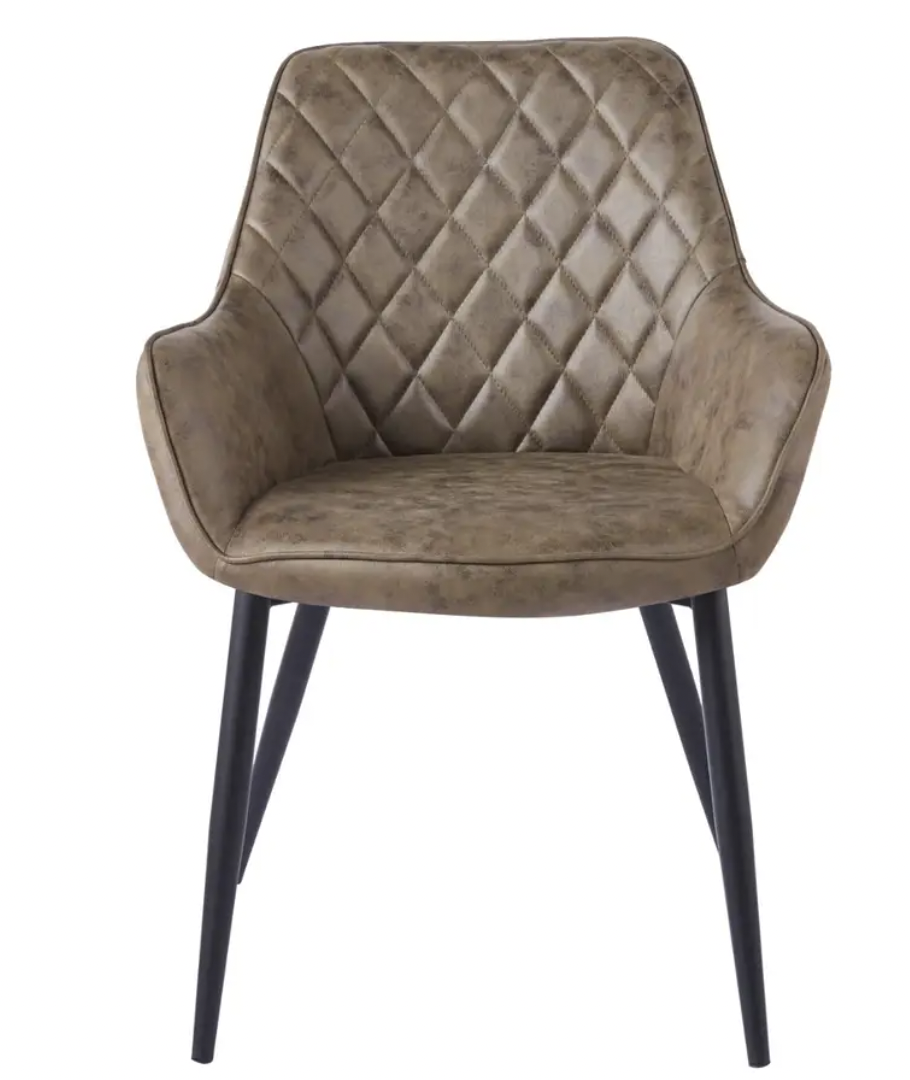
Dining Room Drama
Elevate your dining experience with leather-upholstered dining chairs. Choose rich, dark tones for a classic feel, or lighter shades for a contemporary twist. A leather table runner can also add a touch of elegance to your dining setup.
Office Sophistication
Make your home office a place of productivity and style with a leather desk chair. Combine it with a leather desk pad and storage boxes to keep your workspace organized and aesthetically pleasing.
Outdoor Oasis
Yes, leather can be used outdoors too! Look for weather-resistant leather options for your patio furniture. Pair leather cushions with metal or wooden frames to create a chic outdoor seating area that's perfect for entertaining.
Conclusion
Leather's versatility, sustainability, and longevity make it an invaluable asset in the world of interior design. Whether you're drawn to its luxurious appeal or its eco-friendly options, incorporating leather into your home can elevate your space to new heights. From living rooms to outdoor areas, leather's timeless elegance and durability ensure it's a worthy investment for any design project.

